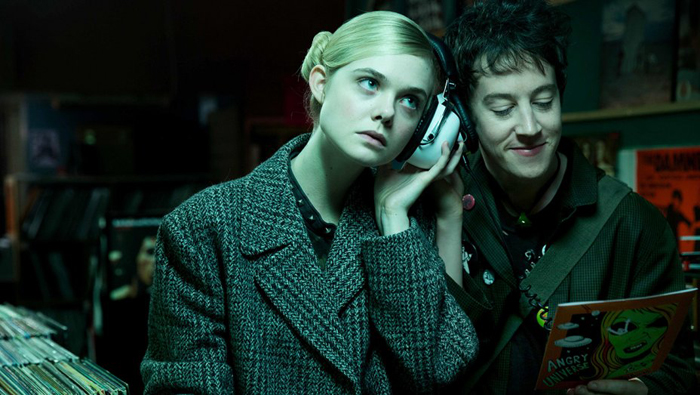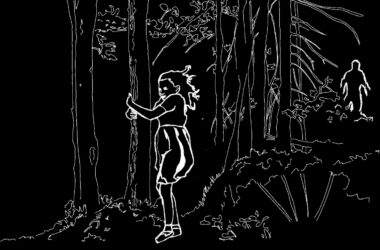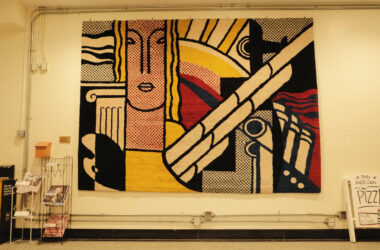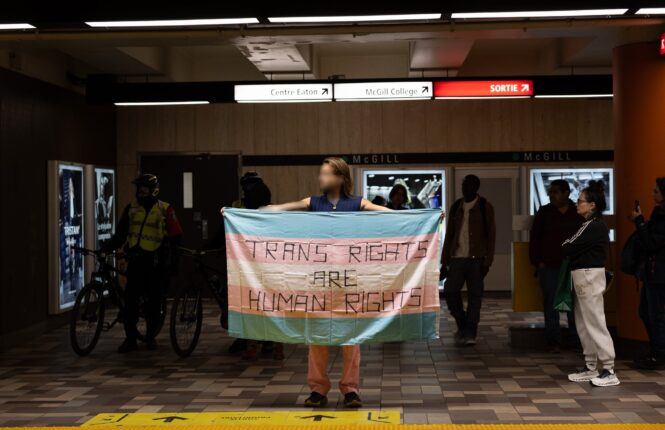The hunt for a wild party is a timeless, often fruitless adventure many teenagers embark on, but when well-meaning gawky teen punk Enn (Alex Sharp) stumbles on a house party hosted by aliens in latex, a surreal mess ensues. There, he meets his delicately awkward love interest Zan (Elle Fanning), an otherworldly being eager to stray away from her overbearing alien cult and explore the streets of Croydon’s 1977 punk scene with Enn as her guide.
Directed by John Cameron Mitchell (Hedwig and the Angry Inch (2001), Shortbus (2006), How to Talk to Girls at Parties (2017) is loosely based on Neil Gaiman’s 2006 short story of the same name. The film offers a creatively erratic variety of genres ranging from shock value sci-fi to over-the-top musical teen romance. However, the plot meanders whimsically, ultimately failing to tie its loose ends together.
Following Enn and Zan on their adventure, the audience is thrown into a muddled world of dynamic alien politics and tradition. Rather than focusing on the charmingly nervous relationship between Enn and Zan—the alien nature of Enn’s communicating with the opposite sex literalized in Zan’s extraterrestrial form—Mitchell chooses to explore a much broader theme: A defiant punk culture versus conservative tradition. Yet, the plot never adopts this as the driving theme, rather, it vaguely occurs in the background. Gaiman’s short story on the other hand is limited to the initial interaction between Enn and Zan, only a piece of Mitchell’s much larger plot.
A tone of active rebellion underlies the film’s atmosphere throughout. Zan giddily runs away with Enn to escape her traditional elders–“tradition” for the aliens entails eating their young. But she flees not because of the horrifying cannibalism, rather, her elders are suffocatingly autocratic, apparently an inter-galactic sentiment shared by many a rebellious alien youth. Her struggle with obedience culminates in a showdown back at the alien hive, a fine suburban home. There Mitchell’s two opposing concepts of punk and tradition clash, depicted in an actual altercation with the punks led by the anarchic Boadicea (Nicole Kidman) and the aliens.
Despite the conceptual creativity of the film, the characters are presented one-dimensionally and granted limited development over the course of the film, save for Zan who breaks from the world emerging from her journey charged with defiance. Opposite her, however, Enn is simply a teenager in love whose ordinary behavior serves as a foil for Zan’s alien persona.
Visually, warm colours painted most scenes to create an intimate setting juxtaposed against the vibrant costumes the characters wear. The soft, almost candle-lit undertones beautifully capture Enn and Zan’s romance as well as softening the raw punk hedonism depicted at many parties throughout the film. Although the expressive and colourful costumes artfully contrast with the mellow hues of the background, it does not make up for the tragic visual effects included in the film. Sporadically interrupted with half-hearted graphics meant to depict Enn’s dreams, the special effects are more fitting for a B movie. These particularly jarring tangents disrupted the flow of the cinematography.
Mitchell’s choice to focus on alien politics and the complications they create eclipses that which makes the film endearing–Enn and Zan’s awkward relationship and the alien youths’ freedom to explore an aspect of the world they have been restricted from. How to Talk to Girls at Parties is a theatrical and colorful tale, but is missing the dense and rich layer of coherent narrative that would give the film substance.









